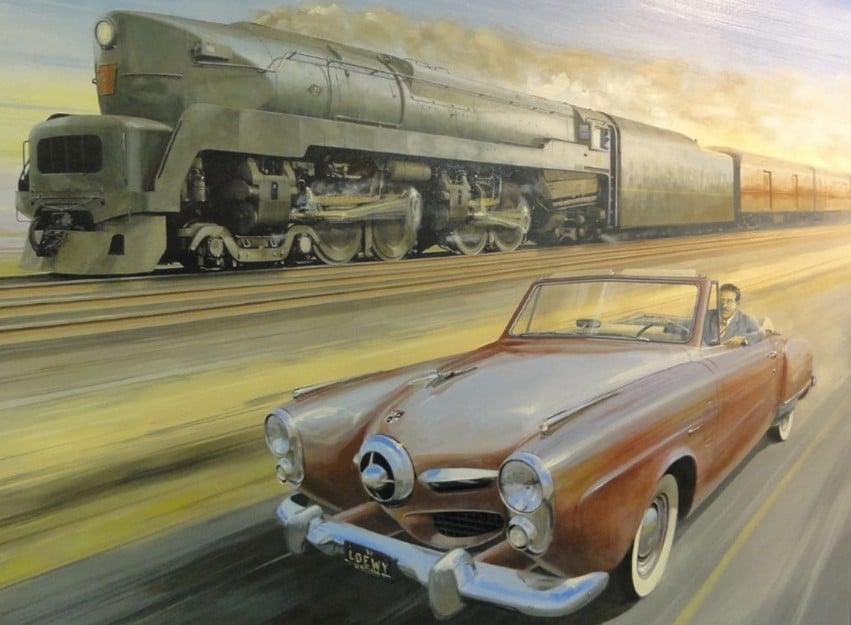
To listen to today’s reflection as a podcast, click here
It’s not an exaggeration to say that Raymond Loewy invented American style.
Most Americans have never even heard of the most influential industrial designer of the past 100 years.
But all of us recognize his touch.
He designed the iconic Coca-Cola fountain, the Lucky Strike package, the logos of Exxon, Shell, and the US Postal Service, the shape of the office pencil sharpener, the curve of the Greyhound bus, and the contours of countless planes, trains, and automobiles.
When Loewy first visited New York City in 1919, he felt depressed. The “world’s greatest city” looked grungy, gray, and crude.
Here were these marvelous new toys of the industrial age – boats, trollies, ferries and the like – but they all looked uniformly old.
In his book Hit Makers, Derek Thompson reports that Loewy had a captivating vision of the shape of things to come. He approached the Pennsylvania Railroad, hat in hand, and asked for the chance to redesign their locomotives.
Loewy was told, “If, first of all, you can come up with a better way to get rid of the trash in Penn Station, you’re on.”
His rubbish removal program succeeded brilliantly. Loewy now had a shot. He promptly “threw a coat” over the locomotive – a single, smooth, bullet-shaped skin that suddenly made trains look cool.
He did the same with cars. Up to that point, automobiles had been presented as boxy, mechanical stagecoaches with engines.
Inspired by what he thought was nature’s perfect shape – the egg – Loewy gave cars a “forward lean.” The long, angular look of the Studebaker coupe – which appeared to be hurtling into the future even while sitting in your driveway – remains one of the most iconic of all American designs.
Amazingly, Loewy was still around in the 1970s. He was approached by NASA engineers concerning the contours of Skylab, the world’s first orbiting space station. Predictably, he helped make it look “Star Wars” cool.
What was Raymond Loewy’s secret to creating so many delightful, futuristic designs?
His theory was called MAYA: Most Advanced Yet Acceptable.
It goes like this: Give people something familiar, something comprehensible at a glance. But make enough bold changes that the viewer is caught off guard. As Thompson puts it, “That’s a train, but it’s the coolest train I’ve ever seen.” I feel secure in what I recognize, but I also feel challenged.
In every human heart, there is a struggle between the old and the new, between familiarity (things we know and trust) and discovery (the excitement of the Next Thing).
Think of planning a family reunion. “The way we’ve always done things” is the safe way to go. But it may also signal that boredom is setting in. “Let’s try something entirely different” ratchets up the energy. But it may also trample treasured traditions. Finding an effective balance – something that reflects a middle way – is crucial.
Likewise, a great strategic plan honors and affirms the past, even while leaning into the future. The Most Advanced Yet Acceptable. That’s the magic of blending tradition with innovation.
When it comes to spiritual things, how do we balance the old and the new?
God calls us to build on the foundation of those who have gone before us – but not to cling to the past in such a way that we forget to embrace God’s new covenant, the Spirit’s gift of a brand-new nature, and the new creation that awaits God’s people in the future.
As the old saying goes, “When you visit the altars of the past, bring back the fire and not the ashes.”
Or as the author of Lamentations declares, “The unfailing love of the Lord never ends … his mercies are new every morning!” (3:22-23)
As far as the shape of our own tomorrows, that is very cool, indeed.
